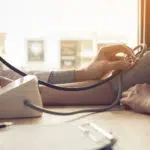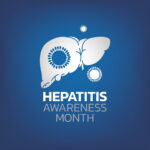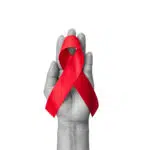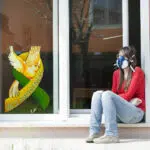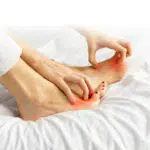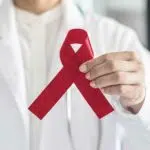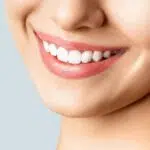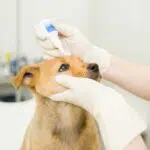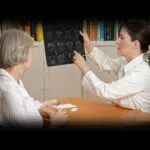Ultraviolet Awareness Month is observed in the United States throughout May. Prolonged exposure to ultraviolet rays may burn delicate eye tissue and increase the chances of developing cataracts and eye cancer. The main source of ultraviolet rays is the Sun. It releases energy (radiation) in many forms, of which sunlight is one. The heat we feel from the Sun is another. The third type is ultraviolet, which is invisible to the human eye. Ultraviolet rays cause sunburn and may also damage your eyes and negatively affect your vision. The best way to protect your eyes from ultraviolet ray exposure is by wearing the correct sunglasses along with a wide-brimmed hat.
History of Ultraviolet Awareness Month
There are two types of ultraviolet rays: U.V.A. and U.V.B. U.V.A. can hurt your central vision and damage the macula, which is a part of the retina at the back of your eye. On the other hand, the front part of your eye (the cornea and the lens) absorbs most U.V.B. rays. These rays tend to do even more damage to the eyes than U.V.A.But which eye problems can occur due to much exposure to ultraviolet rays? It may lead to macular degeneration and vision loss, cataracts, pterygium, skin cancer around the eyelids, and corneal sunburn, which can be very painful and may cause temporary vision loss. The easiest way to protect the eyes is to wear proper eye protection and hats that block U.V. rays. U.V. rays may not just come from the Sun, they may also be reflected from water, snow, and bright surfaces. If you play sports outdoors often, you must consider investing in high-grade eyewear.Eyewear that absorbs U.V. rays is the best way to ensure protection. All types of eyewear, including prescription and non-prescription glasses, contact lenses, and lens implants, efficiently absorb U.V.A. and U.V.B. rays. If you are considering everyday eyewear for U.V. protection, there are several options such as U.V.-blocking lens materials, coatings, and photochromic lenses. UV ray protection eyewear is pocket-friendly and does not hinder your vision. A small step towards eye protection can go a long way in preserving the health of your eyes.
Ultraviolet Awareness Month timeline
Jacques Daviel performs the first cataract surgery in Paris, France.
Johann Wilhelm Ritter discovers ultraviolet rays in Jena, Germany.
Malignant cells in the retina are detected by James Wardrop.
Victor Schumann discovers that some U.V. rays are absorbed by oxygen in the air.
Ultraviolet Awareness Month FAQs
How can we stay safe from ultraviolet rays?
Stay in the shade, wear a wide-brimmed hat to shade your skin and eyes, and wear wraparound sunglasses.
Are there any people who can see ultraviolet light?
It’s been said that ultraviolet light, which ranges from 10 to 400 nanometers, is not detectable to the human eye. Yet, new research shows that some young adults can see ultraviolet light (at a U.V. peak of 315 nanometers), but the health implications may be severe.
What colors can’t humans see?
The human eye is unable to see red-green and yellow-blue simultaneously.
How to Observe Ultraviolet Awareness Month
-
Buy yourself the correct eyewear
Buy eyewear that will protect you from U.V. rays. You can opt for a sturdy pair of glasses or sunglasses, contact lenses, or have lens implants.
-
Wear a hat
Head to an apparel store to get yourself a wide-brimmed hat to wear when out in the Sun. Make sure it covers your eyes and a good part of your face.
-
See your eye doctor
If you experience any eye discomfort, visit your eye doctor. Timely medical help can quickly treat your eye ailments.
5 Facts About The Eye
-
The eye is highly efficient
It can focus on up to 50 objects per second.
-
It can distinguish between many colors
10 million different colors, to be precise.{Eyes work very hard
-
Eyes work very hard
Your eyes use about 65% of your brainpower — more than any other body part.
-
There is a fear of eyes
It’s called ommetaphobia.
-
Most of your eyeball is hidden
Only one-sixth of it is visible.
Why Ultraviolet Awareness Month is Important
-
Highlights the importance of eye care
Our eyes allow us to see all the wonderful things in the world. Can you imagine a life without vision? Ultraviolet Awareness Month is the perfect time for us to learn more about taking care of our eyes.
-
It raises awareness
Not many people are aware of the harmful effects of ultraviolet rays. Ultraviolet Awareness Month informs people about the issue and helps them find ways to treat and prevent it.
-
It helps the fight against cancer
Prolonged exposure to ultraviolet rays may cause skin cancer around the eyelids. Ultraviolet Awareness Month helps the fight against skin and eye cancer.
Ultraviolet Awareness Month dates
| Year | Date | Day |
|---|---|---|
| 2023 | May 1 | Monday |
| 2024 | May 1 | Wednesday |
| 2025 | May 1 | Thursday |
| 2026 | May 1 | Friday |
| 2027 | May 1 | Saturday |


















































